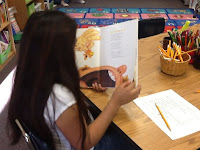Finding diverse literature to incorporate in our lessons is not an easy task. Diverse texts are not easy to access due to the lack of publishing and/or availability in school and or public libraries.
I have found however an immense amount of online resources that can be used as a guide to incorporate diverse cultures into our daily instruction.
Teaching Tolerance offers great information and a tool to help us select diverse texts for our lessons:
Reading Diversity Lite: A Tool for Selecting Diverse Texts (Teacher’s Edition) is a one-page questionnaire that helps users include diverse voices in their day-to-day planning by answering 14 simple yes-or-no questions. This tool is ideal for teachers on the go and anyone looking to assess a text’s diversity.
Reading Diversity: A Tool for Selecting Diverse Texts (Extended Edition) walks users through the method TT uses to identify readings for our K-12 anti-bias curriculum
Are you familiar with Perspectives for a Diverse America? It’s Teaching Tolerance’s K-12 literacy-based anti-bias curriculum. It’s entirely free and housed online. And that’s not all—Perspectives promotes social justice and equality and meets the text-complexity demands of the Common Core State Standards for English Language Arts and Literacy.
CELL and Mount Saint Mary College undergraduates and graduates provided Student Achievement Partnership (SAP) with 150 multicultural texts to help diversify Appendix B of the Common Core. Educators from around the country recommended the books, and awards were consulted:
Here is a list of diverse texts for Kindergarten and First grade
Here is a list of diverse texts for Second and Third grade
Here is a list of diverse text for Fourth and Fifth grade
Diverse Texts with Lesson Plans provided by Vamos a Leer: Teaching Latin America Through Literacy





Choosing and Using Culturally Responsive Texts by:
















